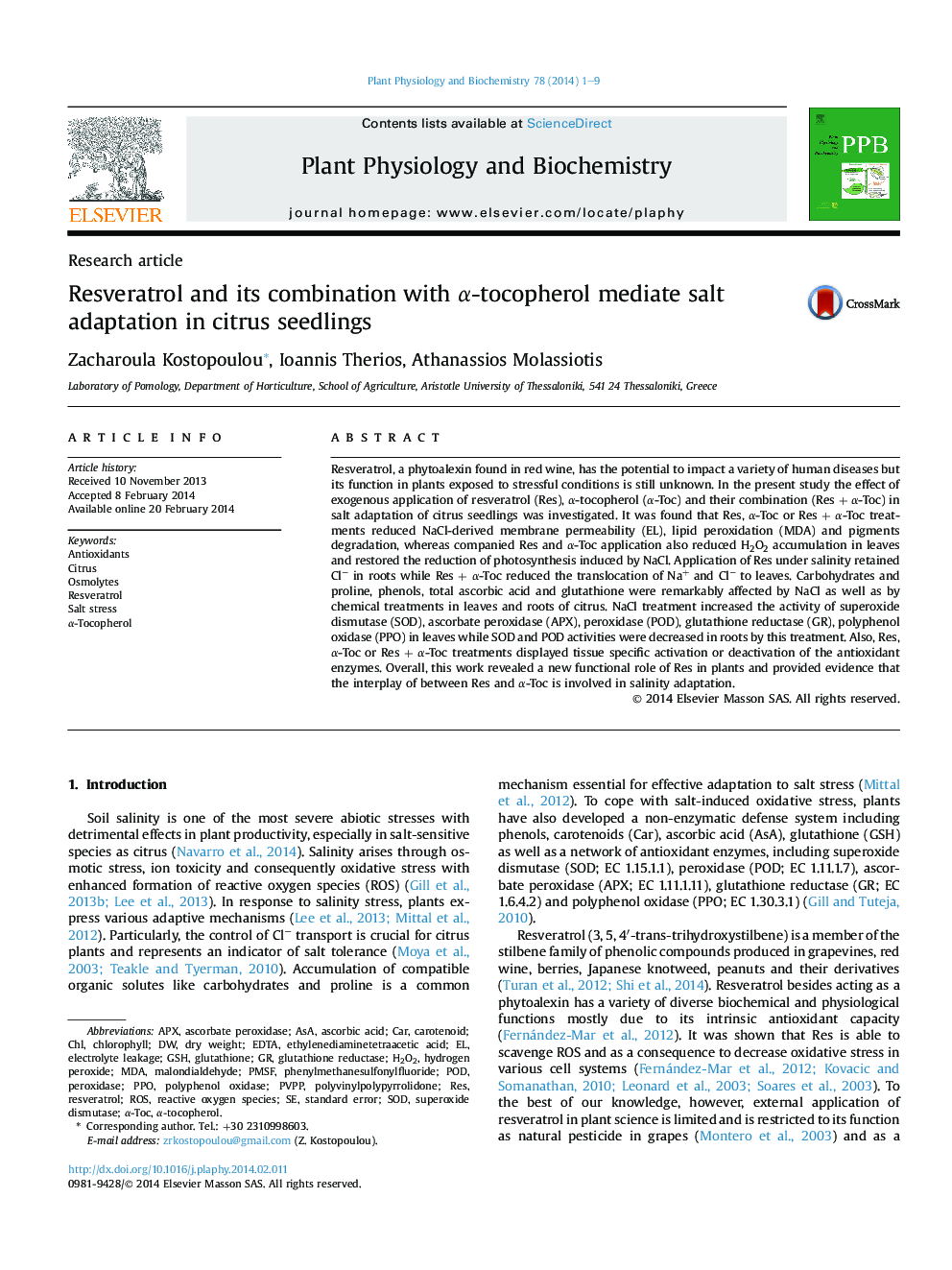| Article ID | Journal | Published Year | Pages | File Type |
|---|---|---|---|---|
| 2016190 | Plant Physiology and Biochemistry | 2014 | 9 Pages |
•This work revealed novel aspects of resveratrol function in plants.•Resveratrol plus α-tocopherol regulated salt adaptation in citrus seedlings.•Resveratrol plus α-tocopherol altered ion homeostasis and antioxidant responses.
Resveratrol, a phytoalexin found in red wine, has the potential to impact a variety of human diseases but its function in plants exposed to stressful conditions is still unknown. In the present study the effect of exogenous application of resveratrol (Res), α-tocopherol (α-Toc) and their combination (Res + α-Toc) in salt adaptation of citrus seedlings was investigated. It was found that Res, α-Toc or Res + α-Toc treatments reduced NaCl-derived membrane permeability (EL), lipid peroxidation (MDA) and pigments degradation, whereas companied Res and α-Toc application also reduced H2O2 accumulation in leaves and restored the reduction of photosynthesis induced by NaCl. Application of Res under salinity retained Cl− in roots while Res + α-Toc reduced the translocation of Na+ and Cl− to leaves. Carbohydrates and proline, phenols, total ascorbic acid and glutathione were remarkably affected by NaCl as well as by chemical treatments in leaves and roots of citrus. NaCl treatment increased the activity of superoxide dismutase (SOD), ascorbate peroxidase (APX), peroxidase (POD), glutathione reductase (GR), polyphenol oxidase (PPO) in leaves while SOD and POD activities were decreased in roots by this treatment. Also, Res, α-Toc or Res + α-Toc treatments displayed tissue specific activation or deactivation of the antioxidant enzymes. Overall, this work revealed a new functional role of Res in plants and provided evidence that the interplay of between Res and α-Toc is involved in salinity adaptation.
